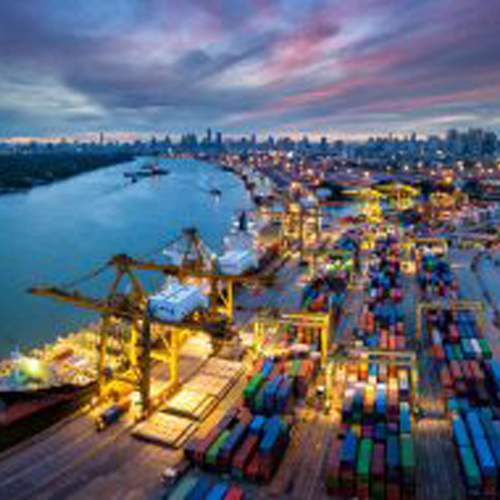
International & Domestic Freight Delays
Coronavirus Causing Domestic & International Freight Delays, Driving Up Prices. And then there’s the Weather!
The Coronavirus drove region and country-wide commerce slowdowns and shuttered many businesses. Freight and logistics companies, domestic and international, lost workers to Coronavirus, and also lost the business of companies that had slowed or even closed. Now, a year later, businesses are back up and running, inventory demands are greater than ever, and everyone wants to move goods – buying and selling – domestically and internationally. Unfortunately, freight and logistic companies have not been able to come back to full staffing and capability Even those freight companies that have come back, find that unprecedented freight demands cannot be met with the existing level of containers, trucks, and port space.
Oh, and then Mother Nature decided to shut down much of the country with a series of dangerous winter storms – idling or delaying those trucks that ARE working, keeping “protect from freezing” items at the manufacturer, and generally causing additional delays.
The current result? Long delays at ports for exports and imports, delays in domestic freight deliveries, shortages of goods and items that are “stuck” somewhere in transit and expedited air deliveries to fill orders – all of which has meant upward pressure on costs.
What is ORCO doing?
Taking all available steps to secure supply for our customers.
Informing our customers proactively regarding any potential supply disruption.
Monitoring order patterns to review customer orders that exceed their average order pattern.
Reviewing the upward price pressure caused by significant cost increases of both the raw materials and transportation.
What can YOU do?
Provide a longer lead time for orders and shipments.
Share detailed forecasts with your ORCO Representative.
Alert your ORCO Representative of any changes in order patterns.
Order freezable products early in the week.
****
The International Delays – Air Cargo
The World-wide Coronavirus has had an international impact far beyond the disruptions seen in 2020.
Ocean rates stayed stable but extremely elevated on all the major ex-Asia lanes in this last week before the Chinese New Year (CNY) holiday begins. Asia to both US East and West costs have experienced sustained volumes and port congestion, pushing factory-to-door delivery times to an average nine weeks compared to four to five.
Record volumes arriving at US ports and constrained capacity mean that recent volatility is likely to continue through the spring of 2021.
The uncertainty in ocean freight coupled with the need for the importer to fill inventories has pushed many importers to the more expensive air freight option to fill orders for domestic customers – as the US economy does its own bounce-back from peak Coronavirus driven downturn. At the same time, unprecedented growth in e-commerce has strained the capacity of the air freight option.
The high cost and uncertainty in ocean freight is driving more importers to air cargo, squeezing capacity, and driving up prices.
With space 20% lower than this time last year, the growth of e-commerce during the pandemic, and the continued demand for PPE, air cargo costs are on the rise.
Following the holiday rush, demand for air cargo dipped at the start of January (with rates still at twice their typical rates for this time of year), but demand shot back up this week to 7% higher than December levels
Those shipments that have been made via ocean containers have t overwhelmed ports of entry, with shortages of extra containers and domestic freight availability, causing long delays and increased costs. As indicated earlier, this drives importers in many cases to bring in extra inventory via increased-price air-freight, all of it adding to the upward price pressure on imported goods.
The problems in the U.S. go beyond the cost burdens: Overwhelmed ports and container shortages along key transpacific routes are causing delays and lost business for exporters. Some store chains and manufacturers — reliant on international supply lines — are being forced to cut other expenses or rethink that strategy altogether.
Few places show the global trading system’s Achilles’ heel better than the ports of Los Angeles and Long Beach, California, where ocean carriers have swamped the port and ground transportation’s ability to handle the influx of goods.
More than 30 container ships were anchored outside the neighboring ports this week, waiting for a week or more to unload. Sick dockworkers are partly to blame, as is a shortage of truckers. But the carriers are catching heat, too, for thriving in the congestion.
The Domestic Delays – Moving Freight from Port, to Manufacturer, to Customer
The US economy is finally growing stronger after the many Coronavirus downturns exhibited in 2020. There is a strong increase in demand across all sectors of the economy and the increase in demand on domestic freight lines – many of who are still experiencing the Coronavirus hangover of fewer workers, idled trucks, and shrunken business. They are struggling to bring workers back in (or train additional workers) and to bring their operations back to pre-Corona virus levels
Trucking volumes, rates, and employment have been climbing since the summer, rebounding rapidly from an early pandemic slump.
With high demand from consumers, importers are rushing to replenish inventory, causing capacity in trucking to tighten and driving rates up.
This will likely remain the case through the first quarter of 2021.
Adding to the problem is the growth of domestic e-commerce during the height of the Coronavirus (2020), which continues well into 2021
With a 60% annual increase in sales by third-party sellers on Amazon’s marketplace last year, the boom in e-commerce continues into 2021.
And finally, the Weather
Adding to an already stressed freight system, the unprecedented freeze and series of storms that hit the United States during the first two weeks of February caused additional delays across the country from ripple effects of entire state shutdowns – Texas – and regional slowdowns in the mid-west and east coast. Plummeting temperatures across the south and mid-west also kept “Protect from Freezing” freight shipments on the docks of manufacturers, adding another delay before the goods can be delivered to customers.
We know the weather will eventually improve, but the damage has already been done with delays and resultant cost increases.
Please read further from our sources (see below) for this BLOG regarding the Coronavirus influence in International shipments, domestic freight, and resultant cost increase.
You can DOWNLOAD a printable version of this BLOG HERE
Consumer Demand Snaps Back, Factories Can’t Keep Up https://www.wsj.com/articles/consumer-demand-snaps-back-factories-cant-keep-up-11614019305?st=2qotuqvawcz1qov&reflink=article_email_share
How Coronavirus is Impacting Shipping: Air Cargo, Ocean Freight, Trucking, and More (February 11, 2021) https://www.freightos.com/freight-resources/coronavirus-updates/
Freight-Cost Pain Intensifies as Pandemic Rocks Ocean Shipping (Bloomberg, February 4, 2021) https://gcaptain.com/freight-cost-pain-intensifies-as-pandemic-rocks-ocean-shipping/




